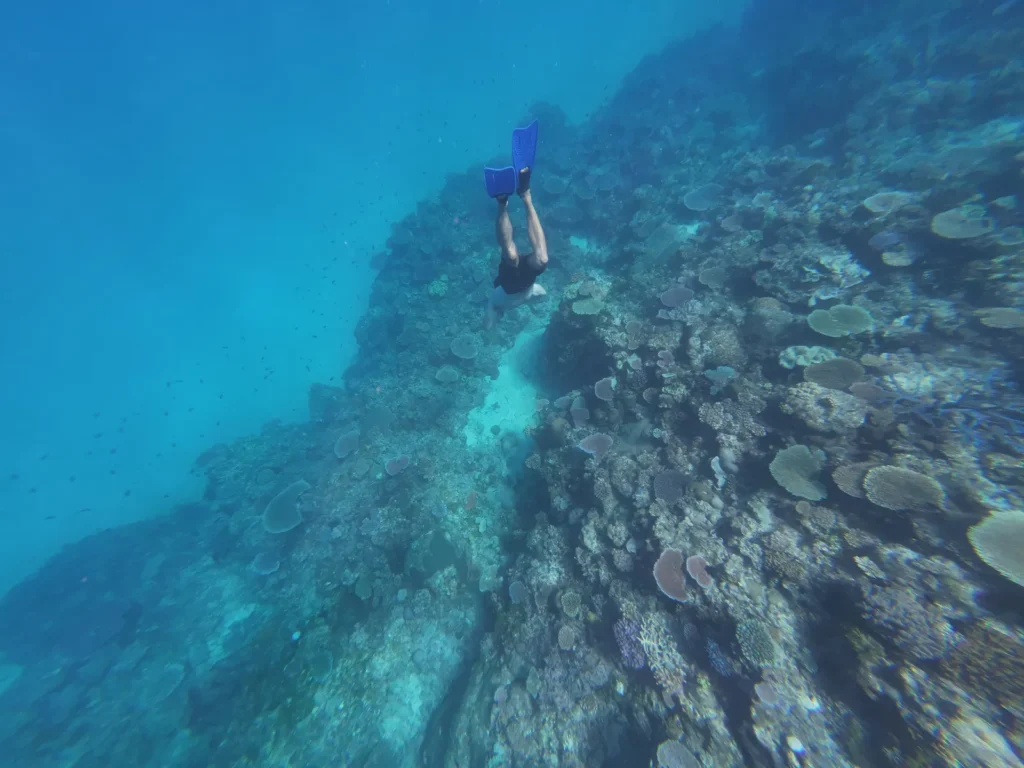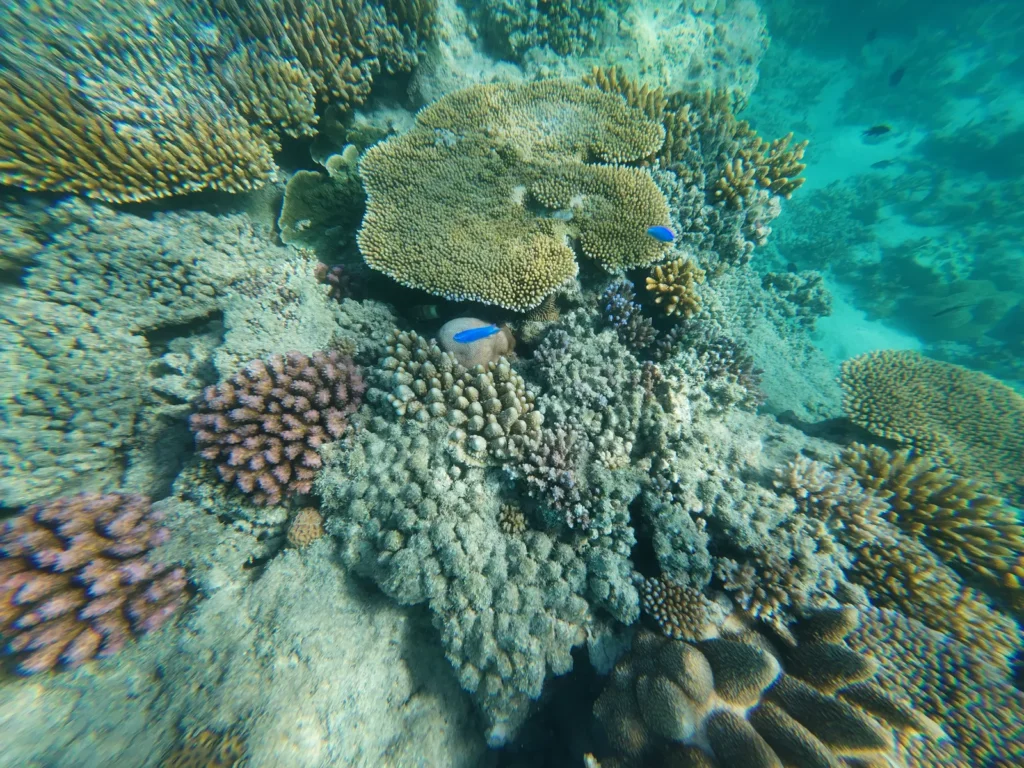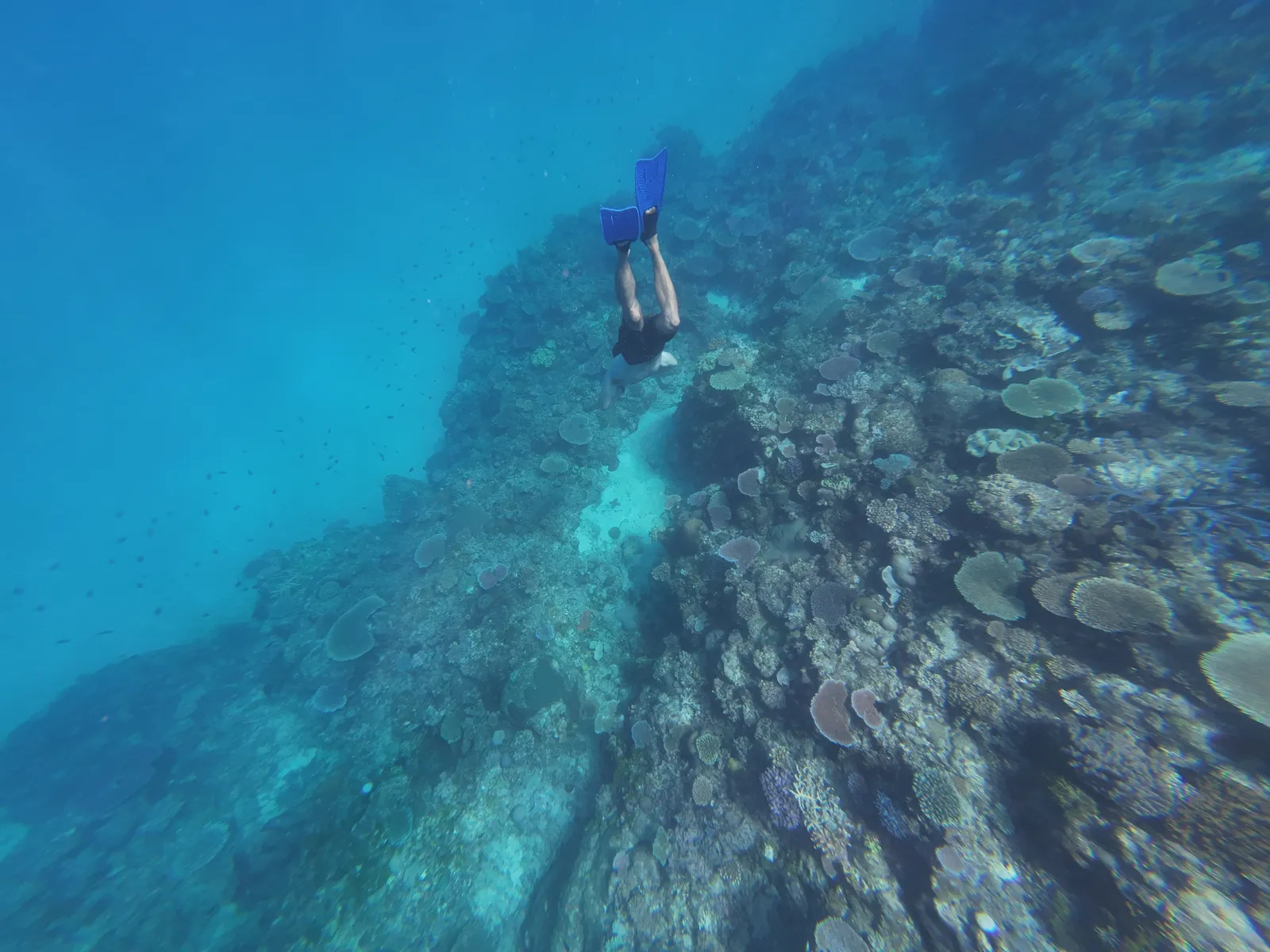Miffa, Mr. Gutang, Tometaro, Kewpie and Cochino are in Fiji after a brief stop in Australia.
Part of the team that conquered the seven continents and the two poles has been reunited to help those who have not yet achieved the distinction of crossing the seven continents.
Fiji, which is about 2000 kilometres from the nearest land, has a large number of islands that are virtually uninhabited or only populated by indigenous people. This raises the question of why we have come to spoil this part of the planet, which does not deserve to end up like Venice or Barcelona.
Fiji and the coral reefs
After initial problems with some of the first time divers on this expedition not doing as well as they should on their first post-qualification adventures, Kewpie decided that the equipment was not ready for further dives and we would only snorkel.
Unfortunately, even the snorkelling proved too challenging for some of the expedition members due to the wind and current conditions (much to the despair of Miffa and Father Rabbit).

So we decided to explore the reefs closer to shore, on the leeward side, where we found some surprising formations.
Although it is true that it is very rare to find large fish in these places, it is possible to see underwater life in places where even babies can swim and snorkel
Artificial Reef Made from Steel and Coral in Fiji
The delicate balance of marine ecosystems around the world is increasingly under threat from human activities and climate change. In response, innovative solutions are being developed to protect and restore these vital environments. One such solution is the creation of artificial reefs, which serve as substitutes or supplements to natural reefs. In Fiji, a pioneering project has been undertaken to build an artificial reef from steel structures and coral. This venture not only seeks to preserve marine biodiversity but also to promote sustainable tourism and local economic development.

The Importance of Coral Reefs
Coral reefs are often referred to as the “rainforests of the sea” due to their immense biodiversity. These vibrant ecosystems provide shelter, food, and breeding grounds for a multitude of marine species. Additionally, coral reefs protect coastlines from erosion, serve as sources of income through tourism, and contribute to the global economy. Unfortunately, coral reefs are among the most threatened ecosystems on Earth. Pollution, overfishing, and climate change—particularly ocean acidification and rising sea temperatures—are leading to widespread coral bleaching and reef degradation.
The Fiji Artificial Reef Project
Fiji’s artificial reef project is a collaborative effort involving marine biologists, environmental organizations, and local communities. The project involves the construction of steel structures on the ocean floor, which are then seeded with live coral fragments. Over time, these corals will grow and colonize the steel, creating a thriving artificial reef that mimics the complexity of a natural coral ecosystem.

The Role of Steel in Artificial Reef Construction
Steel is an ideal material for artificial reefs due to its durability, availability, and ability to support coral growth. The steel structures used in the Fiji project are designed to withstand harsh marine conditions and provide a stable substrate for coral attachment. The surfaces of the steel frameworks are treated to promote the settlement of coral larvae, which then grow into large colonies over several years.
One of the key advantages of using steel is its flexibility in design. The structures can be tailored to meet specific ecological goals, such as enhancing biodiversity or creating habitats for particular species. In Fiji, the steel reefs are shaped to maximize water flow, which helps to disperse nutrients and supports a wide range of marine organisms.
Coral Seeding and Growth
The process of coral seeding is central to the success of artificial reefs. In Fiji, coral fragments are carefully selected from donor reefs, taking care to avoid further harm to natural ecosystems. These fragments are attached to the steel structures using biodegradable materials, ensuring that they remain in place while they grow and spread.
Coral seeding is a meticulous process that requires extensive knowledge of coral species and growth patterns. In Fiji, marine biologists monitor the progress of the seeded corals, ensuring that they are healthy and free from disease. Over time, the corals will grow to cover the steel structures, creating a vibrant reef that supports a diverse array of marine life.

